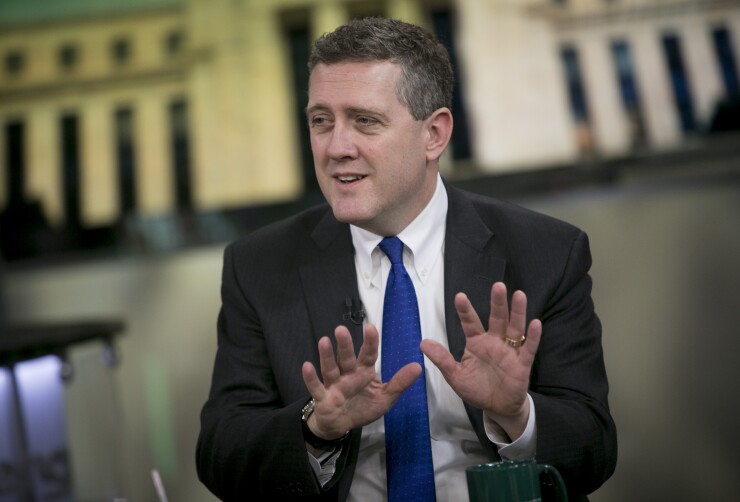The yield curve and other market signals give better clues about the economy in the current environment, Federal Reserve Bank of St. Louis President James Bullard said Wednesday.
“U.S. monetary policymakers should put more weight than usual on financial market signals in the current macroeconomic environment due to the breakdown of the empirical Phillips curve,” Bullard said at Real Return XII: The Inflation-Linked Products Conference 2018. “Handled properly, current financial market information can provide the basis for a better forward-looking monetary policy strategy.”

These signals would also offer clues to help the Federal Open Market Committee define the neutral policy rate — the level that is neither accommodative nor restrictive.
“The flattening yield curve and subdued market-based inflation expectations suggest that the current monetary policy stance is already neutral or possibly somewhat restrictive,” he said.
Although current thinking suggests raising the fed funds rate to prevent rising inflation, with a policy of inflation targeting, low unemployment and faster real GDP growth are not reliable indicators of inflationary pressure.
“Continuing to raise the policy rate in such an environment could cause the FOMC to go too far, raising recession risk unnecessarily,” Bullard noted.
Should the yield curve invert, Bullard said, it would show differences in outlooks between the Fed and the financial markets. “The yield curve information suggests that financial markets do not see excessive real growth or excessive inflationary pressure over the forecast horizon.”
Market-based inflation expectations, he added, adjusted on a personal consumption expenditures basis, are below the FOMC’s 2% target. Data culled from Treasury inflation-protected securities (TIPS) “suggest that markets do not expect the FOMC to achieve the 2% inflation target on average on a PCE basis over the next decade,” he said.
Relying on financial market signals “constitutes a forward-looking monetary policy strategy — arguably more than considering the current level of unemployment,” Bullard said, noting markets are forward-looking and use all available information to determine prices.
In fact, the markets also consider future Fed policy, which gives the Fed feedback, if it takes market signals into account, he added. Right now markets priced in a more dovish feel than indicated in the FOMC’s Summary of Economic Projections, Bullard said, but that may not be sufficient to hold the inflation target.
“Financial market information is not infallible, and markets can only do so much in attempting to predict future macroeconomic performance,” he said, noting the “relatively strong” correlation between yield curve inversion and recession, and TIPS-based inflation expectations “have generally been correct in predicting subdued inflationary pressures in recent years.”
Since the current economic expansion has been long but slow, it suggests “expansion could have much further to go,” Bullard said, adding “the strong performance of current labor markets could entice marginally attached workers back to work, increasing skills and enhancing resiliency before the next downturn.”





